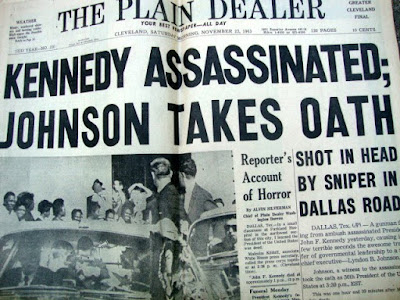 |
| Gabe Rubin in front of Dylan's boyhood home in Duluth. |
Before heading to Hibbing, Mr. Rubin met with several members of the Duluth Dylan Fest committee and long-time Duluthians Steve Goldfine and Craig Grau. The latter two shared several stories and insights I'd not heard before, so I took notes and did a lot of listening. Afterward, we gave Mr. Rubin a tour of the various points of interest related to our theme.
One of the items that came from the encounter was a new realization about a Sinclair Lewis-Bob Dylan connection I'd never recognized before. It's only natural that I'd not previously had this thought because up until this fall Bob Dylan had not yet been honored with a Nobel Prize.
What Mr. Grau highlighted for our guest was that Duluth was not only the home town for Bob Dylan for a season, but was also home town for another Nobel Prize winner, Sinclair Lewis, who lived here in the mid-1940s. Once you recall that Dylan was born in Duluth in 1941, it doesn't take much figgerin' to notice that Lewis -- the first American to win a Nobel Prize for Literature -- was here in the Zenith City at the very same time.
When Sinclair Lewis won the Nobel Prize for Literature in 1930, he was the first American ever to do so, the award mainly a result of his novel "Babbitt" (1922) set in the fictional city of Zenith, which happens to be a popular nickname of our Northland home town.*
Lewis was born in Sauk Centre, Minnesota in 1885. He received his accolades from the Nobel Prize committee in 1930 at the age of 45. Many people are unaware that in his fifties Lewis moved to Duluth and lived here at 26th Avenue East and 2nd Street for a few years in the 1940s. The book he wrote while living here, Kingsblood Royal, happened to be a book about race.
A book about race while living in Duluth in the 1940s? Only 25 years earlier Duluthians broke into the jail and lynched three black workers from a travelling circus that was in town that summer. This incident, is re-painted in Dylan's haunting Desolation Row's opening lines, "They're selling post cards of the hanging.... the circus is in town." Anyone else hearing an echo?
* * * *
The Wikipedia entry on Sinclair Lewis begins...
Harry Sinclair Lewis (/ˈluːɪs/; February 7, 1885 – January 10, 1951) was an American novelist, short-story writer, and playwright. In 1930, he became the first writer from the United States to receive the Nobel Prize in Literature, which was awarded "for his vigorous and graphic art of description and his ability to create, with wit and humor, new types of characters." His works are known for their insightful and critical views of American capitalism and materialism between the wars. He is also respected for his strong characterizations of modern working women. H. L. Mencken wrote of him,"[If] there was ever a novelist among us with an authentic call to the trade ... it is this red-haired tornado from the Minnesota wilds."
A little further down Wikipedia describes the nature of Lewis' writings.
In 1930, Lewis won the Nobel Prize in Literature, the first writer from the United States to receive the award, after he had been nominated by Henrik Schück, member of the Swedish Academy. In the Academy's presentation speech, special attention was paid to Babbitt. In his Nobel Lecture, Lewis praised Theodore Dreiser, Willa Cather, Ernest Hemingway, and other contemporaries, but also lamented that "in America most of us—not readers alone, but even writers—are still afraid of any literature which is not a glorification of everything American, a glorification of our faults as well as our virtues," and that America is "the most contradictory, the most depressing, the most stirring, of any land in the world today."
And in this description of the novelist I hear echoes of Dylan's "It's Alright, Ma (I'm Only Bleeding)" and other songs, which is why so many disenfranchised young people of the Sixties so resonated with Dylan's music.
* * * *
 |
| Dylan tribute on the elevator doors in the lobby of the downtown Holiday Inn. |
If you're taking notes, be sure to review them next May before Duluth Dylan Fest. At least one detail here will be the answer to a question in our Trivia Contest on the first evening of the week.
EdNote: The Hibbing Dylan Project wants everyone to know that Will Call tickets are still available for the December 10 Nobel Laureate Reception at the Androy Hotel. Details here.
EdNote 2: Be sure to pick up a Wall Street Journal, December 10. It might make for a good collectible if you're a Dylan fan.
EdNote 3: Breaking News. The info in EdNote 2 is incorrect. Due to a schedule change, the article will go online tonight and appear in print in tomorrow's Wall Street Journal.
Meantime, life goes on all around you.
*A silly aside: Whether you look at history backward or forward, these two American Nobel Prize for Literature winners are first and last to receive it, and both from Duluth.




















































